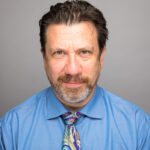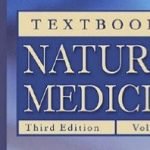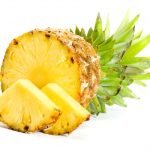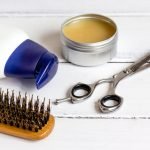If You Do It, We’ll Teach It! The Ever-Expanding Toolkit of the ND Curriculum
FRASER SMITH, MATD, ND
The goal of naturopathic medical education is fairly straightforward: prepare the student for a career in naturopathic medicine. The form that career takes can vary, but the compact between student and school assumes that that the graduate will emerge at the level of an entry-level naturopathic doctor. So what could possibly be complicated about that?
One of our treasured part-time faculty members, Dr Tim Fior, has been with our ND program here at NUHS in Illinois since the day we started it in 2006. Dr Fior is a medical doctor, family medicine certified, and a brilliant and deeply experienced homeopathic physician. He has taught our students from pre-clinical to clinic and knows the program well. He once said to me, “The naturopathic students have it tough: In allopathic medical school you learn about drugs, see some surgeries performed, and then go off to a residency. The naturopathic medicine students have to learn diagnosis, pharmacotherapy, nutrition, physical medicine, homeopathy, botanicals by the hundreds, and more.”1
This insightful remark struck at one of the challenges of that professional preparation. Going to naturopathic medical school means so many skill-sets in so little time. I’m fairly certain that graduates from each decade have had that experience. The fact that we have been able to turn out good doctors who have found their own most valued tools with which to help patients offers some reassurance. But the body of knowledge that comprises current naturopathic practice expands, even if the knowledge changes. And students are already struggling with debt and many have to work and have family obligations, so the time available to assimilate this information is limited. Add to this the pressure on all schools – and the agencies that accredit them – to provide evidence that students are competent. This means that when a program lays claim to a modality or therapy and teaches it in a serious way, that educational institution now bears the responsibility to demonstrate that the student is, in fact, proficient in it.
Allopathic vs Naturopathic Medical School
Drawing a contrast between naturopathic training and allopathic training sheds some light on our challenge. As Dr Fior alluded to, the students in the allopathic system do the following2:
- Spend about 18 months taking classes that help them pass USMLE Step 1. This includes human structure and function, metabolism, pathology, infectious disease, a little public health, pharmacology principles, and drug categories.
- Then it’s off to clerkships for 2½ years. There may be some symposia and certainly some rotation-specific exams to worry about. These “shelf” exams can vary in content, and the results of a “fail” are left up to the home medical school dean. In these clerkships, the students see how working specialists are doing things like internal medicine and surgery. They see how the drugs are really used and how a hospital functions.
- Then it’s time to apply for residency and choose a specialty. That training may take 3 to 5 years.
Naturopathic medical students, in my opinion, must absorb a much broader and deeper amount of knowledge and skills in their 4 years (which is probably 5 academic years compressed into 4 calendar years). Learning biomedical sciences in depth goes on for well over a year. And naturopathic therapeutics begin early and, as we all know, comprise a spectrum of different therapies (all useful to the challenging cases we see). Second year includes the diagnostic sciences and more therapies. Year 3 starts to get into clinical work, as well as more advanced therapeutics and specialty areas such as endocrinology or pediatrics. All along the way, there are clinical theory, business, and special topics courses. Year 4 pours on the clinic, and these rotations are not bystander experiences. The interns may be supervised, but they have to step up and create a treatment plan and work with the patients of the clinic, sometimes for months, as opposed to a 6-week stint. I would say that our students have to mature into entry-level physicians very quickly.
Is Naturopathic Medicine Itself a Specialty?
One way of thinking about a naturopathic medical education is that we are true generalists. We know diagnosis, we know nutrition, we know how to work with all ages of patients, and it has been proven countless times that a naturopathic doctor can go right into family medicine and succeed. Allopathic medicine has become fragmented for the purpose of excellence in specialized areas. Internists, family medicine practitioners, pediatricians, and, to some extent, OB-GYNs, retain generalist skills but lean heavily on referrals to others in their group. I recall the stories of our family MD who was my mother’s physician when she was a child and was there to deliver me when she had her third child at age 40. He set the cast for my sister’s broken hip and set up the rehab. He did house calls and worked the ER. His kind of MD is largely extinct; there are exceptions in rural areas. This is a noble and largely aging population of physicians who are generalists in practice. If you look at any group of doctors who are well positioned to hold their own as general practitioners, it is the naturopathic doctor.
No Doc Is an Island
Having noted our intrinsically generalist nature, it is plain that in 2020, medicine as a whole has advanced to the point where asking patients to see specialists is often a necessity. Thinking of patients I’ve encountered – for instance, a 12-year-old female with rapidly evolving glomerulonephritis – I was quick to ensure that she followed through with the rheumatology services at the great Hospital for Sick Children (aptly named). They were open to letting her use naturopathic therapies and even invited me to speak about naturopathic medicine at their family “open house” day for the many families who had been helped by that busy department. Some degree of integration, or just cooperation, is nice.
So, if we are not the 1-stop shop, does that make us a specialty? Is naturopathic medicine a specialty that doesn’t exist within the allopathic system but shares a common foundation with other specialties? Maybe we are another spoke on the wheel, and that wouldn’t be so terrible, would it?
Distinct Model of Care
It seems to me that calling ourselves a specialty ignores some basic facts. One is that we have a distinct orientation to practice. Our focus on disturbances to the determinants of health, and identifying what clinical symptomatology is driven by disordered physiology that arises out of those disturbed determinants, is one of our fortes. The use of therapies that can nourish, strengthen, and rebalance is another. Sure, we have natural pharmacology and sometimes conventional therapies. But our aim is to create the conditions for health and to increase resilience. Based on not only my knowledge, but also my own personal experience, there is no doubt that allopathic medicine helps people; however, its methods are not the same as ours. It often gets the job done. But for all the patients I can think of who shrugged off a case of walking pneumonia with a little amoxicillin, I can think of just as many who were on polypharmacy and were desperately unhealthy in spite of spending a good deal of their time seeing very skilled medical doctors and osteopathic doctors. For this same reason, although naturopathic doctors have done just fine in a primary-care role as defined by a health system (a hospital-centered system that follows reimbursement-driven models of care), that is not how I would explain the reasons to attend naturopathic medical school to someone who is investigating it.
General Natural Medicine, Specific Tools
We have, it seems, a general body of knowledge that overlaps with other branches of health care. So the question is: what is the shared or expected basis of that knowledge, and what is best considered a naturopathic specialty? One good example is naturopathic oncology. There is a solid body of knowledge of integrative oncology, and judging by the weight and quality of the recent textbook (Parmar, Kaczor, and colleagues3) in this area, it is a little too much for a 3rd-year student to lift it all. That is why there are residencies in this area. That general flow of obtaining expertise in oncology, homeopathy, pediatrics, etc, has self-emerged with plenty of hard work by those sterling individuals who have grown our post-graduate programming.
Since the time of resurgence of naturopathic medicine – if we take the advances in accreditation and licensing entry of the 1980s as a bellwether – we have seen an explosion in parenteral and IV therapies. About a third of us use these in practice. The training “in program” is pretty good, but is supplemented by post-graduate work. Maybe this should be triple emphasized and a naturopathic graduate should be just as skillful in this as the dental graduate who can repair dental carries. Only 2 of our programs, which have acupuncture in their local scope of practice, teach any depth of acupuncture. But since an MD can do medical acupuncture, should we go further there? And what about the vast literature of biotherapeutic drainage, which some of us have found very useful clinically? Physical medicine, such as myofascial work and dynamic muscular stabilization (based on work of the Prague school), can be life-changing for people. And let’s not forget about Ayurvedic medicine, which is the origin of some of the newer (to the North American market) herbal products.
The Trunk May Be Full
To support scope and growth, our tacit attitude for many years has been the title of this month’s column – if the profession is doing it, we’ll find a way to fold it into the curriculum But there are limits to what even our super-dedicated group of educators and students can do in 4 years. Why should it matter? Can’t the schools just tighten up their boundaries a bit and say, “Here’s the cutoff”? Well, that does happen, but one issue for the profession is that scope of practice does hinge on what is taught at a college of naturopathic medicine. When a group of naturopathic doctors goes after licensure/registration in a jurisdiction, one of the first things that legislators and their staff want to see is the education. So any major pull-back by the programs will have consequences there.
As scope expands, the licensing authorities in that jurisdiction will require that the entry-level practitioner applying for a license has this knowledge. Licensing examinations such as the NPLEX are the ticket to ride, and these of course are based on a practice analysis that reflects what the profession is using in practice.
We could minimize or eliminate one therapy or another, but which one? Do we base that decision on a count of systematic reviews or on the success that our doctors report having with it? Where would student expectations fit in with that decision?
Evolution of Training
It would help us if the availability of residencies accelerated, and there are some of our colleagues who are working toward this end. There are already some excellent residencies, and soon-to-be-graduates can go to www.aanmc.org4 to apply and for the match process. We can be grateful to the host colleges that manage this education and to the CNME who has helped guide the standards.
If we cannot have residencies for all, maybe more flexibility from licensing authorities will be needed. Instead of a naturopathic license or registration allowing one to practice naturopathic medicine in all of its branches, some additional certification is needed. That would certainly be a step backward in one sense, but we do see something like this in Intravenous Therapy in some jurisdictions.
Without a doubt, the programs will have to discern what to teach and what to bypass. Our profession is an interlocking system of schools, professional organizations, licensing authorities, credentialing examinations, accreditation agencies, individual doctors and students, and patients. The actions that must be taken cannot be done in isolation. A change to a part impacts the whole and, to some extent, is also determined or constrained by the whole. At least, it is a task that naturopathic doctors and their like-minded associates are well suited for.
References:
- Personal communication, Dr Tim Fior.
- The University of Illinois, College of Medicine. The MD Program. Available at: http://chicago.medicine.uic.edu/education/md-curriculum/. Accessed September 29, 2020.
- Parmar G, Kaczor T. Textbook of Naturopathic Oncology. Medicatrix Holdings, LTD; 2020. Available at: https://textbookofnaturopathiconcology.com/. Accessed September 29, 2020.

Fraser Smith, MATD, ND, is Assistant Dean of Naturopathic Medicine and Professor at the National University of Health Sciences (NUHS) in Lombard, IL. Prior to working at NUHS, he served as Dean of Naturopathic Medicine at the Canadian College of Naturopathic Medicine (CCNM) in Toronto, Ontario. Dr Smith is a licensed naturopathic physician and graduate of CCNM.










